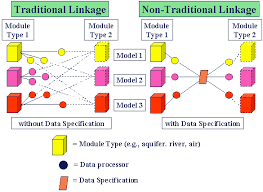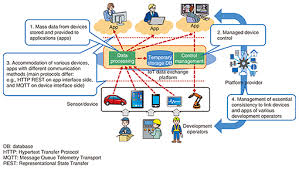Innovative Insights into Data Exchange Protocols for Seamless Connectivity
In today’s hyper-connected world, data exchange protocols serve as the invisible threads stitching together systems, applications, and devices. These protocols define the rules and formats for transmitting data, ensuring interoperability across diverse platforms. From HTTP enabling web browsing to MQTT powering IoT ecosystems, their role is pivotal.

Understanding Data Exchange Protocols: The Fundamentals
At their core, data exchange protocols are standardized methods that allow devices and software to communicate effectively. They dictate how data is formatted, transmitted, and received, ensuring reliability and security. For instance, TCP/IP, a foundational protocol suite, underpins the internet by guaranteeing packet delivery and routing.
The importance of data exchange protocols cannot be overstated. They enable seamless interaction between heterogeneous systems—think of a smartphone syncing with a cloud server or a medical device transmitting patient data to a hospital database. Without these protocols, the digital world would fragment into isolated silos.
Key characteristics of effective data exchange protocols include:
- Interoperability: They must work across different hardware and software.
- Scalability: They should handle growing data volumes.
- Security: Encryption and authentication are critical to protect data integrity.
- Efficiency: Low latency and minimal overhead ensure fast communication.
These traits make data exchange protocols indispensable in applications ranging from real-time messaging to large-scale data transfers.

A Historical Perspective: Evolution of Data Exchange Protocols
The journey of data exchange protocols mirrors the evolution of computing itself. In the 1960s, early protocols like FTP (File Transfer Protocol) emerged to facilitate basic file sharing between mainframes. As networks grew, the 1980s saw the rise of TCP/IP, which standardized internet communication and remains a cornerstone today.
The 1990s introduced HTTP, revolutionizing the web by enabling hypertext data exchange. This era also saw the birth of SOAP (Simple Object Access Protocol), which used XML for structured data exchange in enterprise systems. Fast forward to the 2000s, and REST (Representational State Transfer) gained prominence for its lightweight, stateless architecture, ideal for web APIs.
More recently, protocols like MQTT and CoAP have emerged to meet the demands of IoT. These lightweight data exchange protocols are designed for constrained devices, offering low bandwidth usage and high efficiency. Meanwhile, gRPC, leveraging HTTP/2, has become a go-to for high-performance microservices communication.
This evolution highlights a trend: as technology advances, data exchange protocols adapt to new challenges, balancing speed, security, and scalability.
Comparison of Traditional vs. Modern Data Exchange Protocols
| Protocol | Era | Primary Use Case | Strengths | Weaknesses |
|---|---|---|---|---|
| FTP | 1970s | File Transfer | Simple, reliable | Limited security, no metadata |
| HTTP | 1990s | Web Communication | Universal, stateless | Overhead, not ideal for real-time |
| MQTT | 2010s | IoT Messaging | Lightweight, low bandwidth | Limited to publish-subscribe |
| gRPC | 2010s | Microservices Communication | High performance, HTTP/2-based | Complex setup, less readable |
Deep Dive: Key Data Exchange Protocols in Action
Let’s explore some widely used data exchange protocols, their mechanics, and their applications across industries.
- HTTP/HTTPS: The backbone of web communication, HTTP (HyperText Transfer Protocol) facilitates data exchange between clients (browsers) and servers. HTTPS adds a layer of security via SSL/TLS encryption. It’s widely used in e-commerce for secure transactions and in APIs for data retrieval. However, its stateless nature can be a drawback for real-time applications.
- MQTT (Message Queuing Telemetry Transport): Designed for IoT, MQTT uses a publish-subscribe model, where devices publish data to topics, and others subscribe to receive it. Its lightweight nature makes it ideal for smart homes—like a thermostat sending temperature updates to a central hub. However, it lacks robust error handling for complex systems.
- AMQP (Advanced Message Queuing Protocol): Unlike MQTT, AMQP offers advanced message queuing with features like message persistence and routing. It’s popular in financial systems for reliable transaction data exchange, such as stock trading platforms ensuring no message loss during high-frequency trades.
- gRPC: Built by Google, gRPC uses Protocol Buffers for efficient serialization and HTTP/2 for transport. It’s favored in microservices architectures, where low-latency data exchange between services is critical—like a streaming service coordinating video delivery across servers.
These protocols illustrate the diversity of data exchange protocols, each tailored to specific needs but united by the goal of efficient communication.
Industry Applications: Where Data Exchange Protocols Shine
Data exchange protocols are the unsung heroes behind many industries. Let’s examine their impact in three key sectors.
- Healthcare: Protocols like HL7 (Health Level Seven) and FHIR (Fast Healthcare Interoperability Resources) standardize data exchange between medical systems. For example, FHIR uses RESTful APIs to share patient records securely between hospitals, improving care coordination. A 2023 study by HIMSS found that hospitals using FHIR reported a 30% improvement in data-sharing efficiency.
- Finance: AMQP and FIX (Financial Information eXchange) dominate here. FIX enables high-speed data exchange for trade orders, while AMQP ensures reliable messaging in payment systems. During the 2021 GameStop trading frenzy, FIX facilitated millions of real-time trades without bottlenecks.
- Smart Cities: MQTT and CoAP are pivotal in smart city ecosystems. In Singapore, MQTT enables traffic sensors to send real-time data to control centers, optimizing traffic flow. CoAP, meanwhile, powers energy-efficient street lighting by allowing devices to communicate with minimal power usage.
These examples underscore how data exchange protocols drive innovation, enabling systems to work smarter, faster, and more securely.
Industry-Specific Data Exchange Protocols and Use Cases
| Industry | Protocol | Use Case | Benefits |
|---|---|---|---|
| Healthcare | FHIR | Sharing patient records | Interoperability, scalability |
| Finance | FIX | High-speed trade execution | Speed, reliability |
| Smart Cities | MQTT | Real-time traffic monitoring | Low bandwidth, efficiency |
Challenges and Limitations of Data Exchange Protocols
Despite their strengths, data exchange protocols face several challenges:
- Security Risks: While HTTPS and AMQP offer encryption, vulnerabilities like man-in-the-middle attacks remain a concern. A 2022 report by Cybersecurity Ventures noted a 15% rise in protocol-based attacks, emphasizing the need for robust security measures.
- Scalability Issues: Protocols like SOAP can struggle with large-scale systems due to their verbosity. REST and gRPC fare better but require careful design to handle massive traffic.
- Interoperability Gaps: Legacy systems using older protocols (e.g., FTP) often clash with modern ones like MQTT, creating integration headaches. Middleware solutions can bridge this gap but add complexity.
Addressing these challenges requires ongoing innovation in protocol design, focusing on adaptive security and cross-compatibility.
Future Trends: The Next Generation of Data Exchange Protocols
The future of data exchange protocols is shaped by emerging technologies and demands. Here are three trends to watch:
- Quantum Networking Protocols: As quantum computing matures, protocols like QKD (Quantum Key Distribution) could revolutionize secure data exchange, offering unbreakable encryption for sensitive applications like defense.
- AI-Driven Optimization: AI can enhance protocols by predicting traffic patterns and optimizing data flows. For instance, an AI-enhanced MQTT could dynamically adjust message priorities in IoT networks, improving efficiency.
- Decentralized Protocols: Blockchain-inspired protocols like IPFS (InterPlanetary File System) enable peer-to-peer data exchange without central servers. IPFS is gaining traction in content delivery networks, reducing latency and costs.
These trends suggest that data exchange protocols will continue evolving to meet the demands of a data-driven future.
Emerging Trends in Data Exchange Protocols
| Trend | Protocol/Example | Potential Impact |
|---|---|---|
| Quantum Networking | QKD | Unbreakable security |
| AI Optimization | AI-enhanced MQTT | Improved efficiency, adaptability |
| Decentralized Systems | IPFS | Reduced latency, cost savings |
Best Practices for Implementing Data Exchange Protocols
To leverage data exchange protocols effectively, organizations should follow these best practices:
- Choose the Right Protocol: Match the protocol to the use case—MQTT for IoT, gRPC for microservices, etc.
- Prioritize Security: Use encryption and authentication to safeguard data.
- Monitor Performance: Tools like Wireshark can analyze protocol efficiency and detect bottlenecks.
- Plan for Scalability: Design systems to handle growth, using protocols like REST for flexibility.
By adhering to these principles, businesses can maximize the benefits of data exchange protocols while minimizing risks.
The Enduring Importance of Data Exchange Protocols
Data exchange protocols are the lifeblood of modern connectivity, enabling everything from online banking to smart homes. Their evolution—from FTP to gRPC—reflects the relentless pace of technological progress. As we look to the future, emerging trends like quantum networking and AI optimization promise to push the boundaries further. Understanding and leveraging these protocols is not just a technical necessity but a strategic advantage in a world where data is king.
